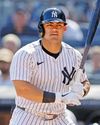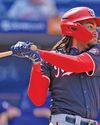
What is a minor league team worth?
Ask a dozen people deeply involved in the game that question and you will get a number of answers.
Several will rightfully point out that the team is worth whatever you can find someone else willing to pay. They’ll look at what other teams in the same classification—or with similar markets or ballparks—have garnered in recent sales and say that’s a rough estimate. Some will take a much more practical approach—take the balance sheet, look at the yearly profits and multiply that by a multiple of three, five or maybe seven. Others will talk about the level of classification, the stadium, the lease, and the scarcity of available affiliated teams and come up with a number based on that.
This simple question has complex answers.
It’s also a much more important question than the average fan understands. If you are looking for an explanation of why Major League Baseball and Minor League Baseball are in the final stages of a tense, difficult Professional Baseball Agreement negotiation over the future of the minors, it’s in part because of the price of minor league teams.
There are MLB owners who believe they were forced to overpay for overpriced minor league teams over the past decade. That has led those owners to be some of the most strident in their beliefs that the entire affiliation system that has guided MLB-MiLB pairings for the past 50 years needs to be completely overhauled.
This story is from the September 2020 edition of Baseball America.
Start your 7-day Magzter GOLD free trial to access thousands of curated premium stories, and 9,000+ magazines and newspapers.
Already a subscriber ? Sign In
This story is from the September 2020 edition of Baseball America.
Start your 7-day Magzter GOLD free trial to access thousands of curated premium stories, and 9,000+ magazines and newspapers.
Already a subscriber? Sign In

THE SERVICE TIME CONUNDRUM
MLB’s byzantine service time rules cloud rookie status and now PPI eligibility

LUIS TIANT WAS MLB'S MOST SUCCESSFUL CUBAN PITCHER
On a scouting trip to Cuba in 1957, Bobby Avila discovered 16-year-old righthander Luis Tiant on the island's Juvenile League all-star team.

ORGANIZATION REPORT
Outfielder Heston Kjerstad's career has been unique, to say the least.

TOP 10 NL EAST
From the moment Thomas White stepped on a high school mound, he was viewed as the top lefthander available in the 2023 draft.

PREPARATION PAYS OFF
lowa politician J.D. Scholten makes a surprising return to pro ball at age 44

MAKING THE GRADE
Assessing the future value of graduated National League prospects

TOP 10 NL WEST
Even in high school, Bryce Eldridge could hit the ball a mile. The 6-foot-7 righthander could also touch 96 mph off the mound.

Wood Has Towering Upside- Nationals rookie James Wood also stands 6-foot-7 and also has game-changing power.
Aaron Judge and Oneil Cruz are 6-foot7 sluggers who stand out for their power in this year’s MLB Best Tools voting. Wood spent half of this season with Triple-A Rochester before making his MLB debut on July 1. While he was in the International League, he captured managers’ attention. Wood unanimously won Best Power Prospect and also claimed Most Exciting Player in a survey of league skippers. Wood hit .353/.463/.595 with 10 home runs in 52 games for Rochester. His .242 isolated slugging was the best for a player 21 or younger at Triple-A this season.

ROAD BLOCK?
Scholarship expansion puts mid-majors at a major disadvantage on the road to Omaha

ROYALS REVIVAL
A revamped and rejuvenated farm system has Kansas City ready to rebound